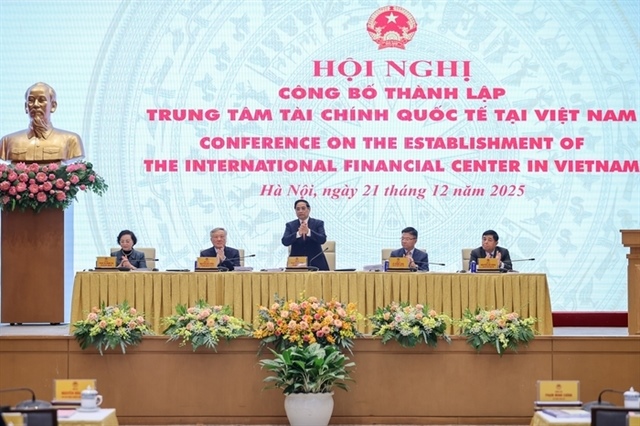Clearing the way to legal support for BNPL services
Clearing the way to legal support for BNPL services
As of 2022, Vietnam’s population is close to 100 million, with two-thirds being of working age. The country is home to a rapidly growing e-commerce market, yet surprisingly, it is also one of the Southeast Asian countries with the lowest credit card penetrations, estimated at 4.1 per cent in 2021.
As BNPL allows consumers to spread the cost over multiple instalments and attracts those who cannot, or would not, purchase goods or services by paying the price in full, these conditions create the ideal opportunity for BNPL service providers.
Despite the opportunity, the BNPL landscape in Vietnam remains slow-moving. This is partly due to the fact that Vietnam does not have a clear legal framework regulating the method. Even the sandbox scheme for fintech activities still remains in the legislative pipeline.
In addition, even if a BNPL platform owner cooperates with traditional bank lenders, the parties need to deal with a significant gap between the strict regulatory web the traditional lenders are subject to, and the fintech providers’ need to “move fast and break things”.
For those reasons, BNPL ventures find it hard to enter the Vietnamese market, unless they are equipped with suitable investment structures.
In BNPL services, the key activity is lending, which is generally restrictive to non-bank entities, including platform owners. In practice, lending activity may be provided by way of a number of structures – for example, a voucher structure; pawn shop structure; or a structure in which the BNPL platform owner partners with a licensed lender, known as a partnering structure.
In the voucher structure, BNPL companies operate a platform where consumers may purchase e-vouchers that allow them to make purchases and pay back in instalments.
In a pawn shop structure, generally, the pawnbroker may lend money to borrowers on the security of an article pawned by the borrower. For now, only local companies may be licensed to provide pawn shop services; so, to achieve the required localness, a special structure may need to be deployed.
Simply put, to serve customers, the partnering structure for BNPL requires three players, namely a company, a licensed lender, and a merchant. The BNPL company plays the role of an IT service provider that operates a platform connecting consumers with merchants and lenders. To merchants and lenders, the company offers its platform and tools, especially machine-learning algorithms, to analyse consumers’ shopping behaviours for credit provision purposes.
Via the platform, the application for a loan will be submitted for the lender’s consideration. Upon approval, the loan proceeds will be disbursed either directly to the merchant responsible for the purchase, or to the appointed bank account of the consumer to finance the relevant purchase. The merchant will then proceed with the purchase. Repayment will be made in instalments by consumers over a predetermined period of time.
From practice, compared with other structures, the partnering structure proves to be pragmatic and efficiently harmonises various needs of the involved players, while effectively mitigating compliance risks. The partnering structure enables the fintech platform to leverage the credit of the finance company, which provides the necessary lending licenses and experience, to deliver credit to the customers. It also allows all parties to benefit from credit performance and underperformance on the credit.
Meanwhile, it enables the fintech platform to benefit from credit and licenses that it does not hold, allowing it to tap into the market that it otherwise could not. It creates a new channel for traditional banks and finance companies to deploy credit, enabling these traditional lenders to grow and at the same time keep their market share. And the partnering structure pulls together indemnity mechanisms and onboarding contracts to effectively mitigate compliance risks (see chart).
From implementing the partnering structure, there are a few matters that need to be handled efficiently, especially for the BNPL company.
First, the business lines to be registered for the company must be appropriate and serve their role in the structure. Secondly, data collection and processing, in which the BNPL company would likely be involved, gives rise to a number of additional compliance requirements. The third aspect is debt settlement, although debt collection service is currently prohibited under the current Law on Investment. The partnering structure process is made from all these, and each of them has to be unified properly in order to help achieve the commercial purpose, reducing the risks.
Looking to the future, the State Bank of Vietnam has recently circulated a new version of a draft decree regulating a sandbox mechanism for fintech in the banking industry, in which the BNPL service should be covered. The most important aspect of this draft decree is that the subjects eligible for the sandbox mechanism must be Vietnam-incorporated entities operating within Vietnam’s territory. This means in order for a provider to apply for the sandbox mechanism, the applicant must already be an operating fintech company in Vietnam.
For BNPL service providers being foreign to Vietnam, if they just wait for clear and sufficient regulations before they start entering into related services, the eligibility requirement of the said draft decree would be like a chicken and egg situation. Thus, to be eligible, they need to start engaging in the BNPL business. For that, the partnering structure, if professionally crafted and implemented, should help.

























